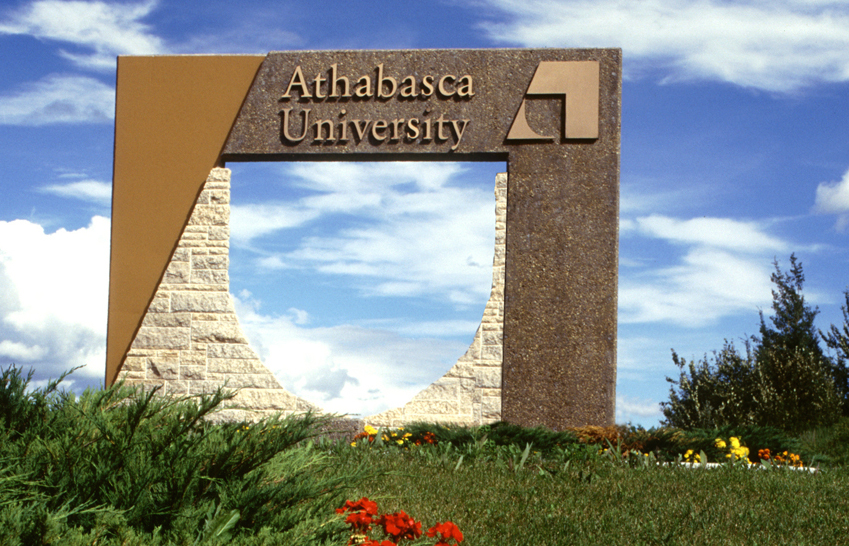Like this article? rabble is reader-supported journalism. Chip in to keep stories like these coming.
St. Albert, Alberta
Despite consternation in December 2014 when Athabasca University announced it was closing offices in the City of St. Albert, the Edmonton-area suburban municipality and the troubled public post-secondary institution were soon quietly negotiating a plan to build and share a new office building on city-owned land.
“Active discussions” between St. Albert and Athabasca U were under way by the fall of 2015 and have continued quietly since, with St. Albert City Council giving the nod to a non-binding expression of interest arrangement with AU in September 2015, according to university and city documents obtained by AlbertaPolitics.ca.
Such a plan would likely rouse controversy at the distance-education university based in the town of Athabasca, in the City of St. Albert and within the provincial government.
AU is experiencing an existential financial crisis. A grimly worded report, requested in 2014 by interim AU President Peter MacKinnon, claimed that “based on our most reliable assumptions, we project the likelihood of insolvency in 2016/2017.” This conclusion has been strongly disputed in the AU community and the town.
Senior AU administrators have also floated the idea the university ought to leave the town of Athabasca. This is not likely to be supported by the NDP provincial government elected on May 5, 2015, since it would cause both an economic crisis for the community and serious political problems for the government.
As previously reported, this situation appears to have placed the NDP government in conflict with the university’s administration and board, members of which were all appointed by a previous Progressive Conservative government. Advanced Education Minister Lori Sigurdson has sent two letters to the board giving it specific instructions on future planning for the university.
Back in St. Albert, the location that seems to be the favoured site for the proposed city-AU building is on a parking lot near City Hall, within St. Albert’s controversial Downtown Area Redevelopment Plan area. This site was at the centre of a similar controversy in February 2015, when a local newspaper reported a plan for an office building there to be built by the local Chamber of Commerce with space for the city. That idea called for the land to be donated to the chamber for a nominal payment.
Meanwhile, the plan for a non-binding expression-of-interest agreement signed by St. Albert and AU was moving ahead, according to a 2015 report prepared for the university’s Board. The idea was to create economies of scale “to attract serious, experienced and credible developers’ for a 90,000-square-foot building on one of three city-owned parcels of land, that report said.
A Sept. 30, 2015, report by the city administration to St. Albert city councillors stated that ‘the City has entered into a strategic partnership arrangement with Athabasca University’ to accommodate the anticipated office space needs of both, with 40,000 square feet for the city and 30,000 for the university by 2020.
In addition to anticipating the city’s need for 40,000 square feet of office space by 2020, the city report said, “it is also anticipating requiring an additional 10,000 square feet every five years starting in 2025.”
“To address both the City of St. Albert’s long-term civic office space requirements and those of Athabasca University, the intent of this process is to secure approximately 90,000 square feet of leased office space for occupancy by the spring of 2020, and additionally to have the option to secure an additional 10,000 square feet every five years for the next 20 years to accommodate new staff space needs for the partners collectively.”
The city report names the downtown site plus one in each of two planned city industrial parks, South Riel Park and the Employment Lands west of the city and north of Big Lake.
The building, says the city report, should be “a showpiece for the surrounding community and a location for multi-sector collaboration” and “embody a strong relationship to the public realm through the use of ground-level open gathering places, both inside the building and on the surrounding site.”
The city report also noted that “for the past decade AU has been seeking a more permanent solution for its presence in the Greater Edmonton Area … into one easily accessible location…”
“Work is underway to seek additional third public, or non-for profit partners, (sic) who have similar space requirements,” the city report notes. “Each entity requires contiguous space,” it also says.
There have been a few hints such an effort was afoot. When AU announced the plan to move its business faculty into an Edmonton commercial building just south of St. Albert in December 2014, the city’s economic development director told the local newspaper, “we don’t see them as gone forever.”
And AU’s 2014-2017 Comprehensive Institutional Plan, published in March 2014, noted in passing that “for the past two years, the university has been exploring options for an AU-owned facility, in St. Albert or elsewhere in the Greater Edmonton Area.”
There are historical and other links between AU and St. Albert. For example, the city was briefly considered as the site for the university before it was founded in 1970, and Margaret Mrazek, the interim chair of the AU board, is a director of the St. Albert Chamber of Commerce.
NOTE: This story has been edited to more accurately reflect the time element of the start of negotiations between the city and AU as shown by the documents. This post also appears on David Climenhaga’s blog, AlbertaPolitics.ca.



